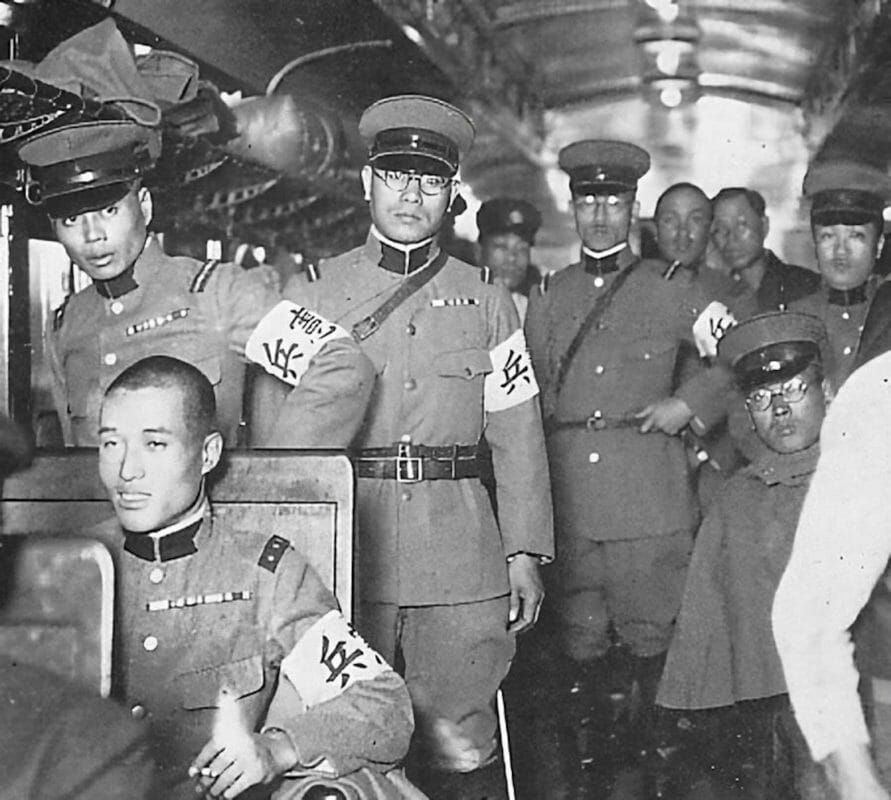Japan’s WWII secret police in occupied PH

Kempei Tai operatives: Most Filipinos feared the Kempei Tai. Its gratuitous use of physical and mental torture was widely known.
According to the propaganda of the Imperial Japanese Army’s secret police in January 1942, the Japanese had liberated the Filipinos from American colonialism. Asia was now for Asians, not Western imperialists. The Philippines was now an equal partner in the Greater East Asia Co-Prosperity Sphere. The Japanese occupation of the Philippines would be beneficial and benevolent to the Filipinos and was only a temporary condition until the Philippines was ready for independence.
What sounded good in theory to the Filipinos turned out to be fraudulent and oppressive in practice. The Japanese ruled the islands with an iron fist. If the secret police’s firm and coercive tactics did not work, they exerted maximum control and brutally quelled any dissent or challenges to Japanese rule.
The secret police were called the Kempei Tai (also spelled Kempeitai). The unit was formed in 1881 and was a branch of the Imperial Japanese Army. All the Kempei Tai members were volunteers. The unit was composed of officers and enlistees. Its alumni included Prime Minister Hideki Tojo, who had attained the rank of general. It was viewed as the right-hand enforcer of Japanese militarism. The Kempei Tai and the German SS, as members of the Axis Powers, maintained a liaison during World War II.
The Kempei Tai training school was established in Tokyo. In theory, the secret police had two missions. First, it was responsible for maintaining peace and order among the populace in occupied countries and territories. Second, it was tasked to control abuses and looting by the Japanese soldiers in occupied countries. It was permitted to dispense severe discipline to recalcitrant and unruly Japanese soldiers. The branch also produced propaganda and conducted intelligence gathering and spy craft. Its one weakness was language skills. The training school did not include foreign languages in the curriculum. The operatives were dependent on native translators.
The Kempei Tai landed at Lingayen Gulf on December 20, 1941. By January 2, 1942, it had reached Manila. Initially, the secret police established its headquarters at the Jai Alai Club. On January 11, 1942, it moved to Fort Santiago at Intramuros. The fort became infamous among Filipinos for Kempei Tai interrogation, torture, and death. By 1944, there were 1,800 Kempei Tai operatives stationed throughout the Philippines.
Initial Kempei Tai propaganda focused on the strength of the Japanese Army: to resist the military domination of the Japanese was futile. The Japanese Army controlled all of Southeast Asia. The secret police reminded the Filipinos that the Americans were brutal to them during the Philippine-American War, and the United States had stifled their desire for independence. According to the propaganda, the American Empire was the true imperialist in Asia, not the Japanese Empire.
As the Filipino guerrilla movement against Japanese occupation expanded and intensified during 1942 and 1943, the Kempei Tai shifted its tactics. Propaganda was not enough to maintain peace and order. It no longer looked upon guerrillas as “misguided elements” but as a direct threat to Japanese occupation.
The creation of “zonas” was one Kempei Tai tactic. The purpose of the “zonas” was to sever the guerrillas’ connection to the supply of food and support. Anyone who was not a resident of a zone was considered a guerrilla. Any resident of a zone caught providing sustenance to someone outside the zone was arrested for aiding a suspected guerrilla.
Another tactic was establishing associations to report on guerrilla activity. The secret police would offer additional food rations if people reported suspicious activity in their neighborhood. If the soft treatment did not provide enough intelligence on the guerrillas, the Kempei Tai would use threats of arrest and/or harm to people and/or their families.
A small percentage of Filipinos voluntarily aided the secret police. There were several reasons for their betrayal of fellow Filipinos. Career criminals saw an opportunity to profit from being an informer. Some Filipino informers did it as an act of revenge against their perceived enemies. Some opportunistic Filipinos looked upon informing as an effortless way to make a good living.
Over time, most Filipinos feared the Kempei Tai. Its gratuitous use of physical and mental torture was widely known. Its goal was to pacify the Filipinos, but the secret police’s atrocities only made the Filipinos more Anti-Japanese and more determine to overthrow the Japanese occupation.
On December 27, 1945, the Philippine War Crimes Commission convened the first trial of Kempei Tai members. Former internees and victims of the secret police testified regarding their inhumane experiences. After Philippine independence on July 4, 1946, President Manuel Roxas continued the trials of former Kempei Tai members.
Dennis Edward Flake is the author of three books on Philippine-American history. He is Public Historian and a seasonal park ranger in interpretation for the National Park Service at the Eisenhower National Historic Site in Gettysburg, PA. He can be contacted at: flakedennis@gmail.com

